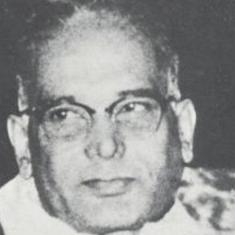The idea was simple: Lakhs of government employees across hundreds of departments will go through biometric identification while entering and leaving office. The devices, it was envisaged, would capture these time stamps and keep a log of their daily schedule and hours spent in office. Not only this, the government also launched a public portal, attendance.gov.in, where data is being uploaded in real time for public information – and scrutiny.
The website initially received positive responses from various sections while some even commented that it shouldn’t have taken this long for such a simple solution to ensuring that work gets done in the government offices. but all doesn’t seem to be well with the biometric attendance in government offices.
Conflicting accounts emerged as reports suggested that after the introduction of this system employees were spending on average an extra 20 minutes in office every day. On the other hand, there were reports of Delhi government employees shunning the system, with over 160 offices in the national capital found to be not marking attendance at all.
The reality, though, is a little more nuanced than that.
Lukewarm response
Almost eight months after its launch with much fanfare, the portal has only managed only a lukewarm response. In February, the Department of Personnel and Training had to shoot off a reminder to 16 ministries where the employees were not marking their attendance on the system at all.
“In many offices, there is a large difference between the number of registered employees and the number of employees marking their attendance in the BAS. The secretaries of all ministries/departments have been requested to issue directions to all employees to mark their attendance in the BAS on a regular basis,” the DoPT order said.
On Thursday, less than 50% of over 1,20,000 employees registered mark their attendance.
Not only this, according to the official stats on the websites, one out of every three registered officials are not even active on the platform yet. For instance, over 146 organisations registered on the system have less than 10% of active employees out of a pool of over 29,000 personnel. These include organisations such as DD News, Press Council of India, Border Security Forces and Archaeological Survey of India which have less than 1% active members.
Overall, only about 66% of registered employees are actually active on the system even though 27 organisations have 100% employees active on the system.
Loophole management
It is not just the fault of the organisations, though, that the employees are not regularly punching their attendance. Many organisations are suffering from employee resistance to the system resulting in delays and even damaged devices in some cases. Just after two months of the system’s implementation, over 50 machines were found damaged or even stolen under “mysterious circumstances.”
This even happened at the National Informatics Centre, which reportedly had the largest number of damaged devices. Coincidentally, NIC is the implementing agency of the project itself.

Apart from damaged devices, there is the case of inactive devices which could mean that they are damaged or just turned off for reasons such as breakdown or no connection. According to official data, more than 33%, that is one in every three devices, is currently inactive.
On the other hand, there are multiple organisations where devices haven’t even reached as yet or they are yet to be installed. All India Radio Directorate General is one such organisation. An official of AIR spoke on the condition of anonymity and said that the devices are pending to be linked to the system. “These devices are all lying here and there in the offices, nobody has come from the NIC to link them up yet but it should happen soon,” he said. “We are using our offline biometric system though and it works just fine.”
However, another official hinted at employee resistance as the cause of delay. “Many are worried about the attendance going online for public access,” he said. “There needs to be coordination between the implementing agency and our office but nobody wants their attendance to be tracked.”
Meanwhile, the Department of Personnel and Training is upbeat about the system and believes that it is functioning as it should. “The system has benefited many employees including me," said KG Dhatwalia, Media Officer at the DoPT. "People cannot lie about your performance any more and there is proof of how many hours you have worked.”
What about one in three damaged machines and as many inactive users though? “There’s no perfect system in the world,” Dhatwalia said. “If we keep focussing on faults, nothing will ever improve. There’s a system and we should see its merits.
NIC could not be contacted for a comment even after repeated attempts.










